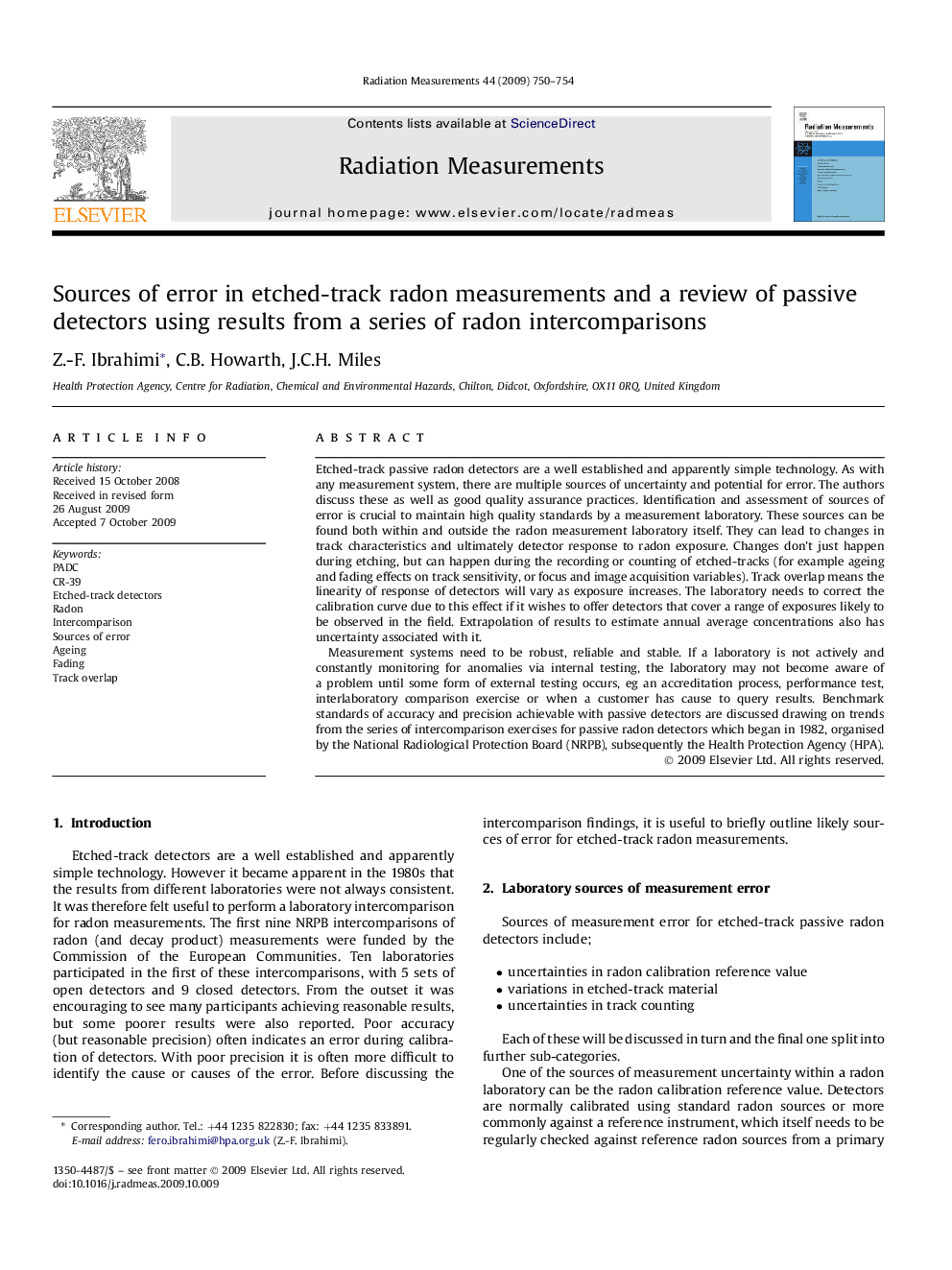| کد مقاله | کد نشریه | سال انتشار | مقاله انگلیسی | نسخه تمام متن |
|---|---|---|---|---|
| 1881716 | 1533444 | 2009 | 5 صفحه PDF | دانلود رایگان |

Etched-track passive radon detectors are a well established and apparently simple technology. As with any measurement system, there are multiple sources of uncertainty and potential for error. The authors discuss these as well as good quality assurance practices. Identification and assessment of sources of error is crucial to maintain high quality standards by a measurement laboratory. These sources can be found both within and outside the radon measurement laboratory itself. They can lead to changes in track characteristics and ultimately detector response to radon exposure. Changes don't just happen during etching, but can happen during the recording or counting of etched-tracks (for example ageing and fading effects on track sensitivity, or focus and image acquisition variables). Track overlap means the linearity of response of detectors will vary as exposure increases. The laboratory needs to correct the calibration curve due to this effect if it wishes to offer detectors that cover a range of exposures likely to be observed in the field. Extrapolation of results to estimate annual average concentrations also has uncertainty associated with it.Measurement systems need to be robust, reliable and stable. If a laboratory is not actively and constantly monitoring for anomalies via internal testing, the laboratory may not become aware of a problem until some form of external testing occurs, eg an accreditation process, performance test, interlaboratory comparison exercise or when a customer has cause to query results. Benchmark standards of accuracy and precision achievable with passive detectors are discussed drawing on trends from the series of intercomparison exercises for passive radon detectors which began in 1982, organised by the National Radiological Protection Board (NRPB), subsequently the Health Protection Agency (HPA).
Journal: Radiation Measurements - Volume 44, Issues 9–10, October–November 2009, Pages 750–754